Explore the city with this self-guided Kyoto walking tour around central Kyoto. Follow the marked route or pick attractions to suit your interests.
This Kyoto walking tour of central Kyoto is entirely self-guided. Take it at your own pace and spend the most time at the attractions that interest you. The walking route is designed as a full day walking tour to take in significant historic, cultural, architectural and of course a few food-related attractions. You didn’t think I was going to let you starve in a city full of such amazing food, did you?
Table of Contents
The walking tour route through central Kyoto
The walking route utilises subway stops as the start and endpoints. We begin our day’s walking tour from Nijojo-mae station on the Tozai subway line just outside Nijo Castle and end at Sanjo-Keihan station also on the Tozai line. Depending on your starting base you may choose not to use the stations, you may begin at a different point, already be in the immediate area or use the bus service.
Our preference in Kyoto is to walk, it is a flat city with good walking paths and it’s a very safe city to navigate by day or night. Our experience right across Japan is that locals are extremely helpful, if you are looking even slightly lost or confused they will point you in the right direction.
This walking route is 8.5 km which is less than 2 hours of walking, however, do remember that you will cover additional distance on your feet at each location. Exploring the attractions along the way is what is going to take time. For most people this is going to be a full day’s itinerary but will depend on the season and how much time you spend at each place.
This is the walking route we will take, you can open and save it in Google maps if you want to so you can view it offline on your phone or tablet.
Kyoto walking tour route
1. Nijo Castle
Nijo Castle is a large complex and there is plenty to see here. Having been a prolific reader of historic novels set in Japan I was fascinated by the idea of walking across the Nightengale floors and having them sing to me. I would have visited to hear those alone. The castle’s main tower is no longer standing but Nijo is still an excellent example of a flatland castle complex.
The Ninomaru (second circle of defence) and Honmaru (primary circle of defence) are still in place and palaces within both sections although there is only access inside Katsura Imperial Palace during special openings. Climb the stairs on the remains of the castle tower in the inner circle for a view over the grounds.
The inner and outer moat is still in place and the extensive gardens are stunning in all seasons. Allow enough time to wander through the full complex, there’s plenty to see. Follow this link to read the full article for a more complete guide to Nijo Castle, its history and its buildings.
We would also recommend seeing one of Japan’s few remaining original castle towers if time allows. Both Himeji Castle and Hikone Castle can be achievable day trips from Kyoto.
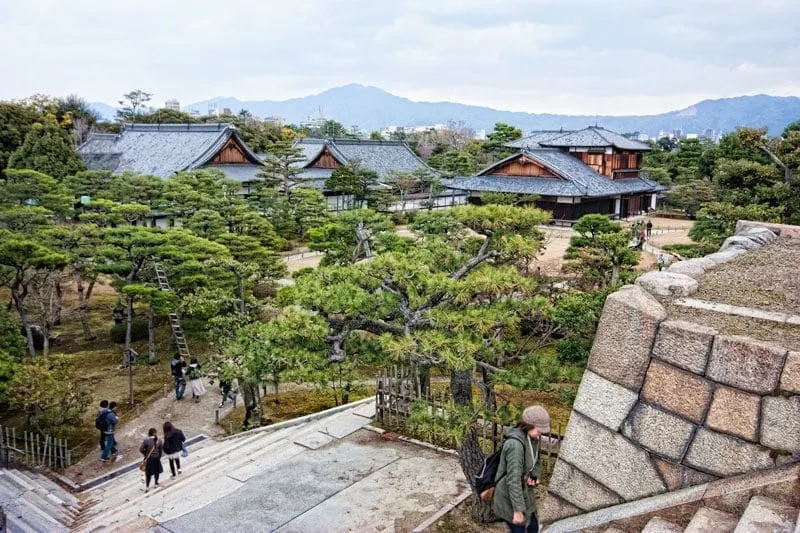
Nijo castle is open from 8.45 am until 5 pm. Admission closes 1 hour prior to closing time. There is an entry fee is Y600.
2. Nishjin Textile Centre
As you leave the castle head north on Horikawa Dori to the Nishijin textile centre. The centre is a commercial operation but the reason for going is to see the free kimono fashion parade. It’s held throughout the day with women modelling a variety of styles of kimono and obi. If you wander upstairs while you wait there’s a display of silkworms and several types of silk weaving being demonstrated.
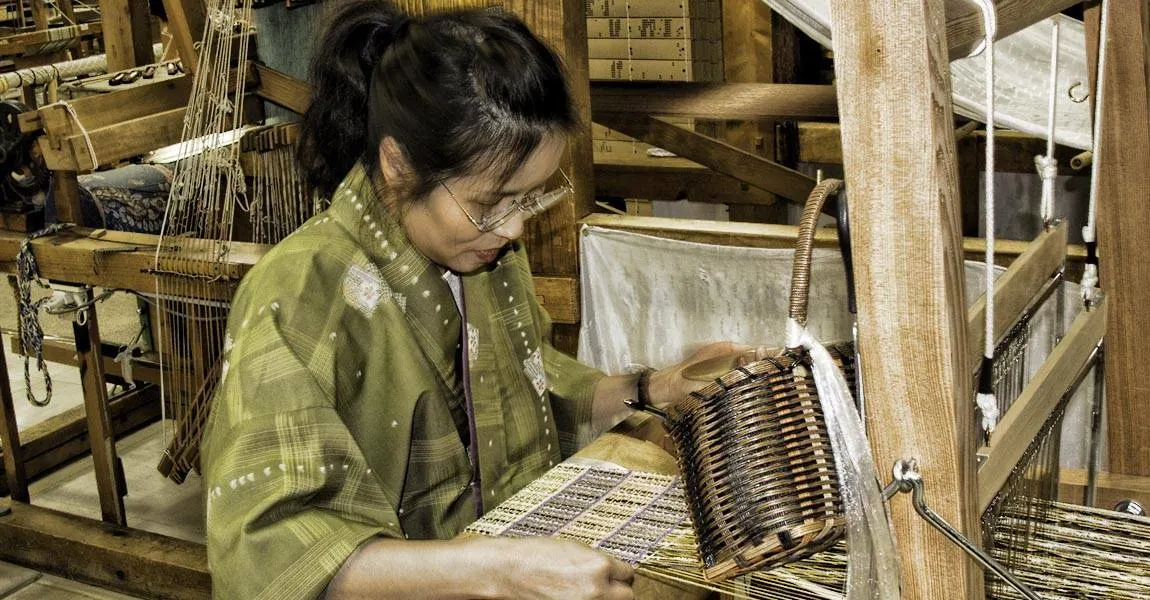
The free shows take place roughly hourly between 10 am and 4 pm. The current official timetable is available here.
3. Kyoto Imperial Palace
We now make our way east to Karasuma Dori which runs parallel to Horikawa where the textile centre is. The Kyoto Imperial Palace complex is even larger than Nijo castle so once you hit Karasuma road it will be easy to see.
Entry to the Imperial Palace and park is free. It’s even easier to fit the visit into a walking tour now as they’ve changed from guided tours at set times to public opening all year round so there is no need to book. The Imperial Palace itself isn’t open on a Monday.
The palace was the residence of Japans Imperial family until 1868 when the capital and Emperor relocated to Tokyo. At the northern end of the grounds are gardens and the Konoe pond, the area is especially beautiful with its early flowering, weeping sakura in spring time. As you head south you come to the Imperial Palace and south east of that is the Sento Imperial Palace. The Sento Palace was built in 1630 to be the retirement palace of Emperor Gomizuno and subsequent Emperors. If you continue to the southern border of the park there is a small shrine called Itsukushima Shrine. It shares it’s name with the famous shrine and floating tori on Miyajima Island in Hiroshima but I wasn’t able to discern any other link between the two.
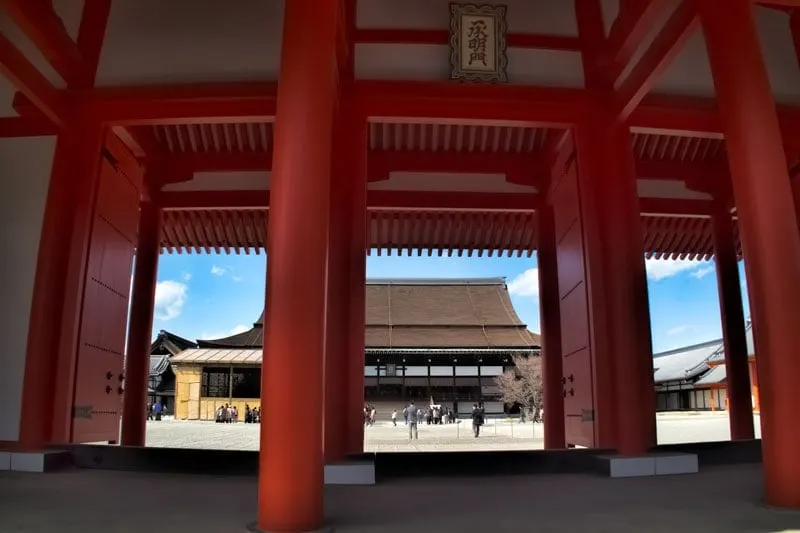
4. Go’o Shrine
Back on Karusuma Dori and opposite the Imperial Palace Park is Go’o Shrine. This isn’t a large or ‘important’ shrine and that is why I chose to include it. It’s a community shrine tucked away here and somewhat unusual in that it’s adorned lavishly with pigs.
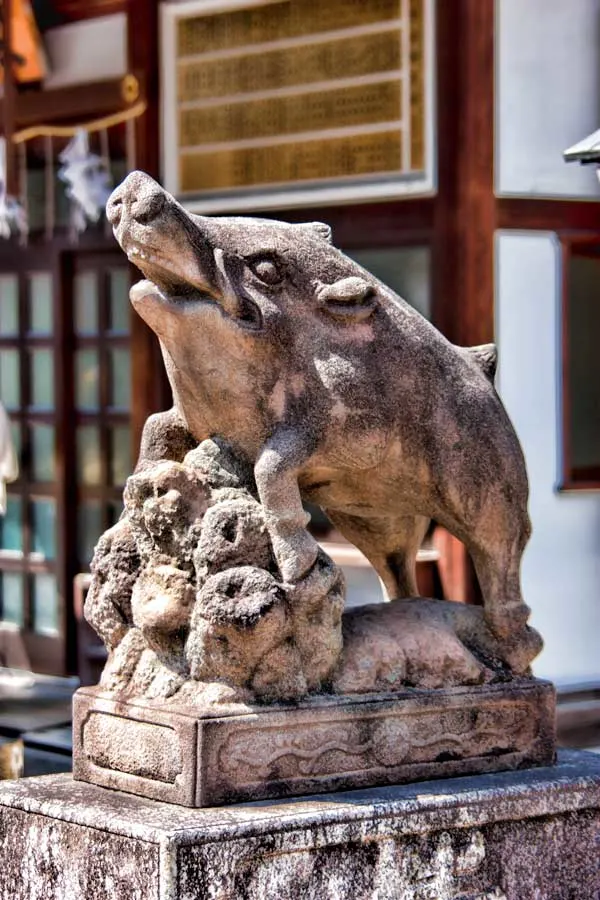
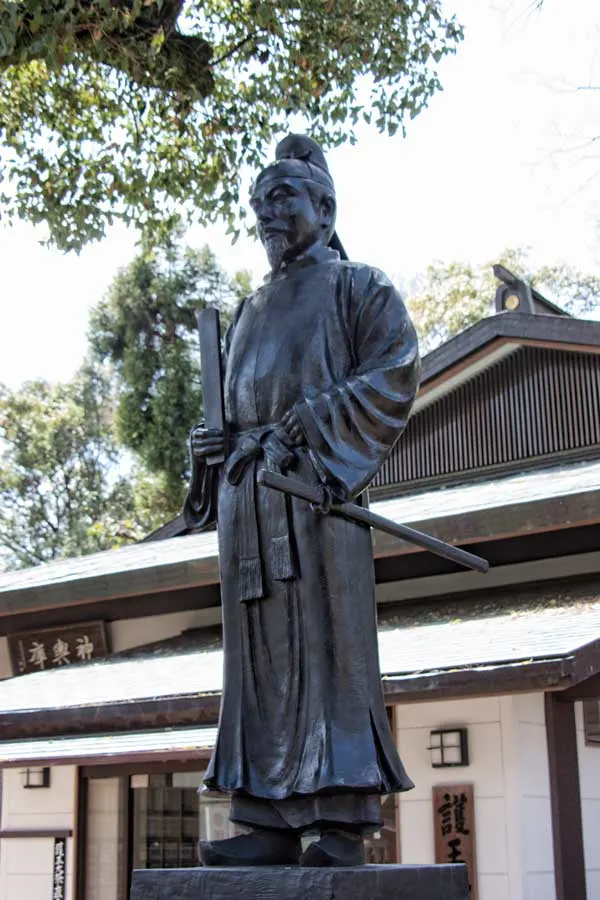
It enshrines Wake no Kinomaru (733–799) who was an adviser to Emperor Kammu (737–806) during the Heian period of Japans history. Legend tells that Kinomaru thwarted a plan to harm the Emperor’s heirs and change the Imperial succession. During his campaign, Kinomaru hurt his leg but was protected by a herd of wild boar and so they retain their position in the shrine protecting him again in the afterlife.
At 11 am on the 4th of April, the day of Kinomaru’s passing the Go-o Taisai Festival takes place at the shrine.
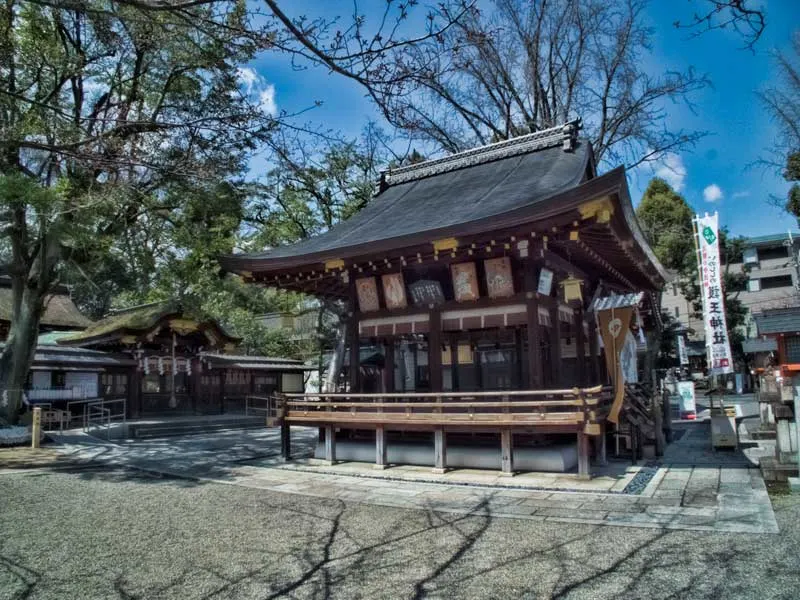
5. Rokkaku-do Temple
While in Kyoto you will no doubt visit many of the famous temples that feature in the brochures and guidebooks. I include Rokkaku-do because we love it and because it’s not famous despite its wonderful history. Many of the Japanese arts originated and evolved in Kyoto, ikebana, the Japanese art of flower arranging has its home at the Rokkaku-do temple. In fact, unassuming Rokkaku-do is one of our top 15 temples in Kyoto.
Cross the road and continue heading south from Go’o Shrine and you will find Rokkakudo. The legend goes that in the year 587 Prince Shotoku bathed in a small pond on the site and in a dream he was told to found a temple at that spot. The buildings that we see today including the hexagonal shaped main hall from which Rokkaku takes its name date back to 1876.
So we now have this temple looking completely at home pressed against the city buildings that have grown up around it. You can even sit in a Starbucks in the foyer of one of them looking out through the glass windows at the temple’s pond and fountain.
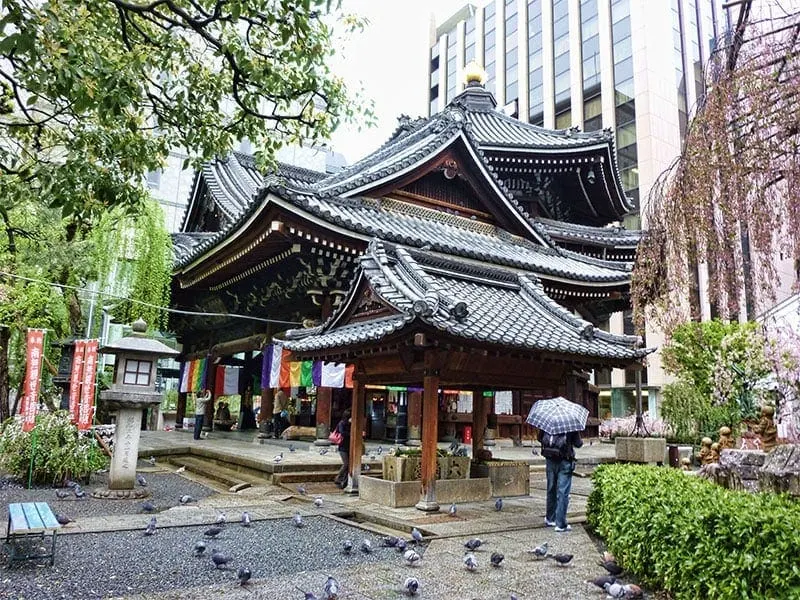
It wasn’t until the 12th century that the then Abbot Sankei Ikenobo would create a method of flower arranging as an offering to Kannon, the goddess of mercy, that would become known as ikebana. The temple has been managed by Priests of the Ikenobo family since those times, they are the masters of ikebana. The tall building on the roadside directly before the temple is now the headquarters of the modern school of flower arranging.
On the day we found this temple I had stopped at a poster attached to the glass doors of a building advertising an ikebana flower show. As I tried to interpret dates and the map in Japanese a security guard came over and having established that I had an interest in the art ushered us inside and into what appeared to be the lift of the office building.
Japan is pretty safe so we weren’t worried but a bit bemused by his enthusiasm and our total lack of understanding. When the lift opened we were on a floor with the most beautiful ikebana displays. While many of the ladies were friendly pointing us towards what was clearly their work and indicating our cameras to take photos we didn’t know we were inside the important school until much later.
6. Nishiki Market and lunch options
By this stage, you are probably starving if you haven’t already popped in to one of the food establishments we passed along the way. We are going to continue down to the corner of Shijo Dori and turn left heading west. Directly after you pass the huge Daimaru department store (yes you do need to bypass the basement food hall and many floors of eateries for the moment) turn left into the alley beside it and walk to the corner. When you turn right here you are entering the western end of the Nishiki market.
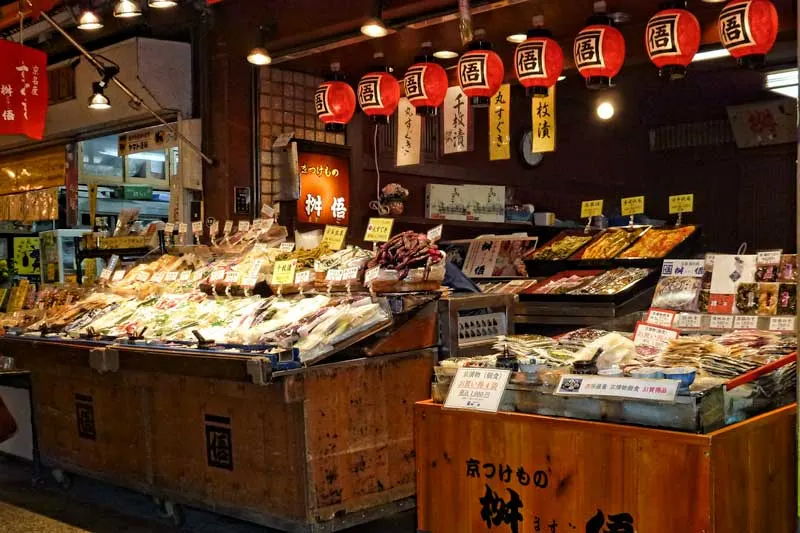
The market runs for 6 blocks (400 meters) parallel to Shijo-Dori. It’s been a produce market, selling fish initially for around 700 years. Today you can buy everything you need to make Japanese style cuisine. As you walk along there are small stalls where you can buy ready to eat items and snacks. Many of the stores also offer tastings of their fare.
7. Pontocho Hanamachi
When you reach the end of the Nishiki market you will see a shrine in front of you. Explore if you wish then head back onto Shijo Dori and continue east towards the river. Right before you get there you will see the little wooden sign for Pontocho Alley.
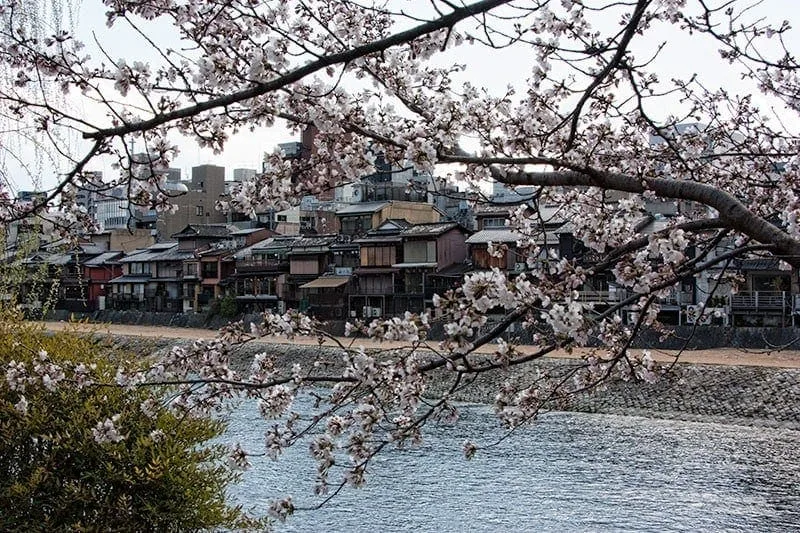
Pontocho Alley runs parallel to the river so this view below is taken looking back across the river and shows the back of the many restaurants and businesses there. They aren’t the cheapest place to eat in Kyoto but some are very good and not all are prohibitively priced as is sometimes rumoured.
Pontocho is a hanamachi, a historic geisha district in Kyoto. At the northern end of the Pontocho Alley is their theatre but you may be lucky on your way to or from dinner in the evening to see a maiko or geiko on their way to an engagement in one of the restaurants or tea houses.
8. Shirakawa Canal
I’ve read Arthur Golden’s Memoirs of a Geisha several times over the years and this area of Kyoto felt like I’d been transported into the pages of the book. The Okiya (geisha houses) and Ochaya (tea houses) line the streets in this historic part of the city. During the sakura season, it was especially beautiful but the history is evident in the streets and buildings all around you.
Watch out for the little rectangular stickers stuck to a lantern near the bridge over the river, they are senjafuda, the business cards of some of the local geisha. You might also see these as you eat and drink around the city, a few tea shops and restaurants have them displayed too.
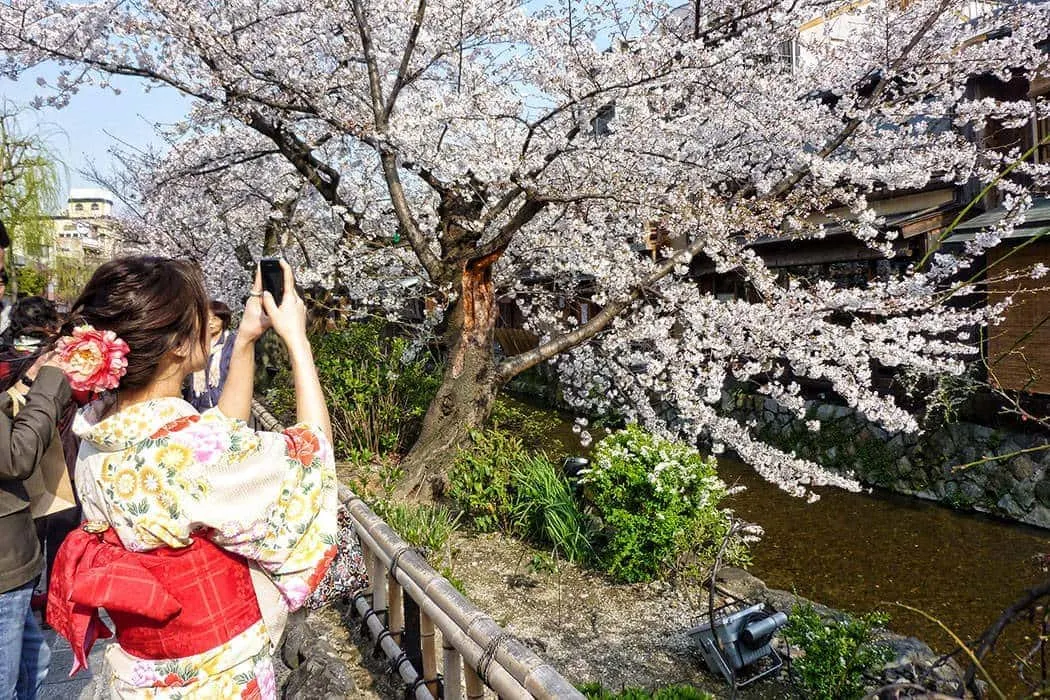
Exit the Shirakawa Canal area back towards the Kamogawa river and follow its banks north until you reach the subway station at the intersection with Sanjo Dori.
9. A locally guided night food tour
On our most recent trip to the city, we joined an evening tour exploring some great food and izakaya spots with a local. While you will pass many restaurants and izakaya as you wander the laneways in this part of the city it can be difficult deciding which ones to try. Kyoto’s understated and classic style doesn’t have bold signage and you might not know if they have an English menu or are even foreigner-friendly.

Our guide for the night was Taka and it was like having a friend take you around Gion and Pontocho, a friend who is Japanese, loves the foodie scene, and lives in Kyoto. The places we visited were each a slightly different style, one very traditional, another quite modern and the third a typically tiny standing bar. They were all excellent. As we got talking we got extra tips too on other places to try so it’s a great idea to do early in your Kyoto stay.
Read more about our night out izakaya hopping and get some handy tips on Kyoto food culture.
Where to from here
The walking route utilises subway stops as the start and endpoints. As you exit the Shirakawa Canal area back towards the Kamogawa river you can follow its banks north until you reach Sanjo-keihan, the subway station at the intersection with Sanjo Dori and end your walking tour there.
Do you have a little more time in the day and a few more steps in your feet? Here are a few other nearby attractions that you may want to add to your day:
- Continue on to Yasaka Shrine and Maruyama park
- Take a wander through some of Kyoto’s other geisha districts Gion Kobu and Migagawa-cho are also nearby
- Stay for dinner along Shijo Dori, Pontocho or Gion. There are many great restaurants as you wander along but we can recommend Omen
Interested? Save these images to Pinterest.
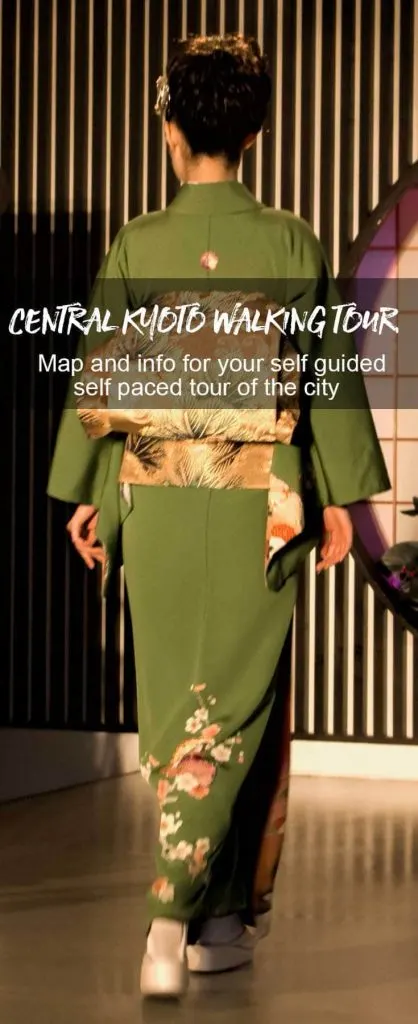
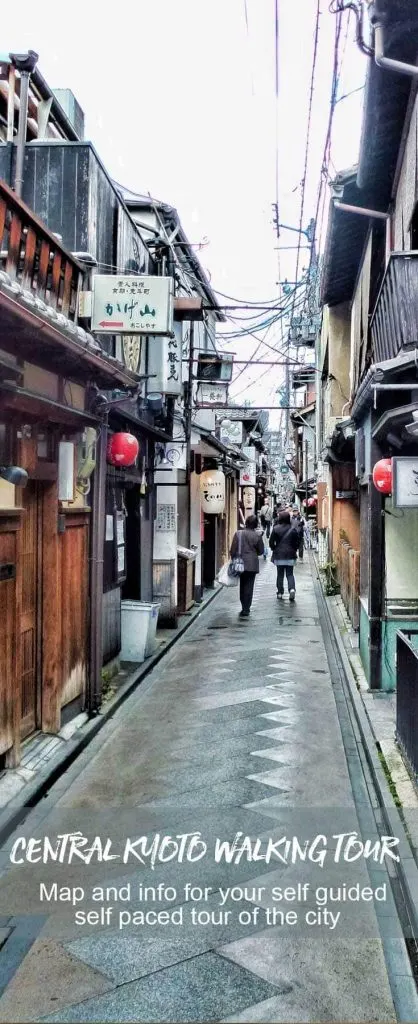
Nada
Sunday 16th of July 2023
My partner and I are visiting Kyoto in October and are thinking about self guided walking tour. However, we feel a bit intimidated with transportation, finding it and which is best, bus or train. It all seems a bit overwhelming. What recommendations do you have? Or should we hire a guide for the two days?
Toni Broome
Sunday 16th of July 2023
Kyoto is a city that we find takes quite a bit of walking to see it well and we prefer the flexibility of setting our own pace and agenda as we go than having a guide or tour do it for us. Perhaps start planning with what are your key things you absolutely want to see in the two days and where you will be staying, maybe near the station, in the centre of town, slightly suburban or a nearby city like Osaka? The route I cover on this particular walking route goes between 2 stations Nijojo Mae at the castle and Sanjo on the Keihan line so it is fairly easy to back to a hotel from those points or along the way you pass close to stations on the 2 subway lines. There are many bus stops too of course and while we do use them sometimes they do add an extra complexity so aren't my first choice. Which ever way you decide is right for you, enjoy! I do recommend having either global roaming, a travel SIM for your phone or mobile WIFI so you can get online and check for nearest station or see where you are on a map any time you want to.
Eva Kisgyorgy
Monday 21st of January 2019
Wow, such a useful article! I always enjoy doing self-guided tours instead of group ones, to allow walking and taking photos at my own pace. Thanks for this!
Isabelle
Sunday 22nd of April 2018
great article!! Putting the google map itinerary is just so useful! Thank you so much! I'll do it as soon as this summer ;)
Machell Apple
Sunday 2nd of July 2017
We recently visited Japan for 2 weeks. Your Kyoto walking guides were invaluable. Thank you! Somewhere I remember that you mentioned loving novels referencing the night gale floors. Could you share any titles?
2 Aussie Travellers
Sunday 2nd of July 2017
Hi Machell, so pleased it was some help, I hope you had a fabulous time. The books that come to mind first are the Tales of the Otori series by Lian Hearn.
Lyn @ A Hole in my Shoe
Sunday 5th of March 2017
Thanks for sharing this information. These are great suggestions. You know I'm stalking your page for ideas as we are heading to Japan in June, so thank you for your wealth of information and inspiration.
Lynda Lu
Friday 7th of April 2017
Fantastic information. We spent a week in Tokyo, absolutely love Japan! Hardest part was navigating the train system. If you're travelling to Tokyo, be prepared to eat out breakfast, lunch and dinner.
2 Aussie Travellers
Monday 6th of March 2017
Thanks Lyn, have a fabulous trip to Japan. We haven't been in summer so will be very interested to hear about your experiences.